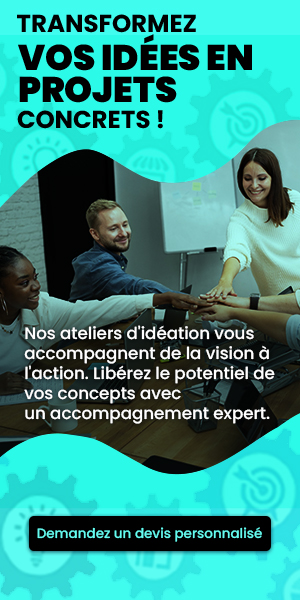The engagement of stakeholders in the ideation process is a critical driver for the success of innovative projects. By integrating the varied perspectives of different actors, the creative process is enriched and the objectives are aligned. Involving stakeholders from the outset allows for a shared vision and stimulates collaboration, essential for transforming ideas into tangible solutions. This dynamic not only fosters innovation, but also improves decision-making, thereby reinforcing commitment and engagement around future projects.
🔥 Nous recommandons Ideamap
Ideamap est l’outil idéal pour un brainstorming ou un projet collaboratif. Grâce son interface facile et à ses fonctions IA, Ideamap booste votre créativité tout en favorisant une meilleure organisation de vos idées pour atteindre vos objectifs.

Stakeholder Engagement in the Ideation Process
The engagement of stakeholders is a fundamental concept in the ideation process, which involves bringing relevant actors together around an idea or project. Stakeholders can be internal collaborators, clients, partners, or even community members. Their involvement from the initial stage of ideation is crucial to ensure that the final outcomes meet the expectations and real needs of all concerned.
To begin this process, it is essential to identify and prioritize the stakeholders. This means understanding who has the most influence or interest in the project and how necessary their engagement is for its success. Good stakeholder management not only helps prevent potential conflicts but also creates a collaborative framework that nurtures creativity and innovation.
Once the stakeholders have been identified, it is important to define an engagement plan. This plan should include concrete strategies to communicate the project vision, the objectives to be achieved, and the role of each stakeholder in the process. Transparency is paramount here. By openly sharing information and soliciting feedback, you demonstrate that you value everyone’s contributions. This fosters a climate of trust and encourages active participation.
At the heart of ideation, design thinking is a particularly effective method for integrating stakeholders. This user-centered approach encourages a creative exploration of problems while emphasizing the real needs of users. By using brainstorming techniques and collaborative workshops, stakeholders can share their ideas, express their concerns, and co-create solutions. This creates a dynamic exchange space where innovation can thrive.
Another aspect to consider is the regular monitoring of stakeholder engagement. This involves setting up feedback mechanisms throughout the ideation process. By gathering feedback, you will have the opportunity to adjust your strategy and better meet stakeholders’ expectations. This feedback loop strengthens the sense of belonging and involvement, which is crucial to maintain the enthusiasm necessary for the project’s progress.
Finally, documenting interactions, ideas born during ideation sessions, and decisions made is essential. This allows for a record of stakeholder contributions and ensures that everyone feels recognized in the process. This record also serves as a valuable resource for future projects, allowing for learning from each engagement experience.
In summary, the engagement of stakeholders in the ideation process is a structured and thoughtful approach that requires planning, transparent communication, and suitable methods. By placing stakeholders at the heart of discussions, you promote a culture of innovation and inclusivity that is essential for successfully carrying out your projects.

FAQ on Stakeholder Engagement in the Ideation Process
Q: Why is it important to involve stakeholders from the beginning of the ideation process? Involving stakeholders from the start ensures alignment on the vision and objectives, thereby fostering sustained engagement throughout the project.
Q: What are the key steps to effectively engage stakeholders? The steps include identifying stakeholders, communicating objectives, collecting feedback, and integrating their ideas into the ideation process.
Q: How can Design Thinking facilitate stakeholder engagement? Design Thinking encourages open and creative collaboration, which helps better understand stakeholder needs and integrate them into solution design.
Q: What tools can be used to maintain stakeholder engagement? Various tools such as collaboration platforms, surveys, and interactive workshops can be utilized to foster active involvement of stakeholders.
Q: How can the level of stakeholder engagement be assessed? The level of engagement can be assessed by monitoring their participation in meetings, analyzing feedback, and measuring satisfaction with the ideation process.
Q: What role do stakeholders play in decision-making? Stakeholders provide diverse and valuable perspectives that can influence decision-making, ensuring that the decisions made are relevant and tailored to collective needs.
Q: How to manage conflicts of interest among different stakeholders? Transparent communication and open discussions are essential to identify conflicts of interest and find solutions that address the needs of all parties involved.














